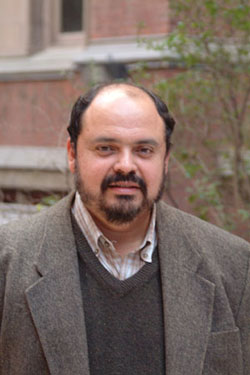Mexicans Are Now New York City’s Fastest Growing Ethnic Group, But New Immigrants Face Tough Social and Economic Challenges
Using information from the 2000 U.S. Census of Population, the study finds that the average per-capita income of the Mexican population is among the lowest in New York City. The mean household income per-capita of Mexican New Yorkers is $10,231, or less than half the prevailing average of $22,402 for all New Yorkers in 1999. Close to one-third of Mexicans lived in households that were below the poverty line in 2000, more than double the poverty rate in the city overall.
The report also reveals a troubling link between low income and educational attainment. The report shows that the average educational completion of Mexicans in New York is approximately nine years of schooling, compared to 13 years for New Yorkers overall. In addition, Mexican teenagers have the lowest high school retention rates in New York.
The report, The State of Newyorktitlan: A Socioeconomic Profile of Mexican New Yorkers, is available on-line.
Mexicans had the highest rate of population growth of all the major racial and ethnic groups in New York City in the 1990s. The number of Mexican New Yorkers counted by the U.S. Census more than tripled, from 61,772 in 1990 to 186,872 in 2000. But the Census data likely reflects a substantial undercount of the total number of Mexicans living in New York. More inclusive estimates place this population in the range of 275,000 to 300,000.
Mexicans have grown to constitute the third largest Hispanic/Latino group in New York, after Puerto Ricans and Dominicans. More than 60 percent of all Mexican New Yorkers reside in Queens and Brooklyn, although there are significant populations in the Bronx and in Manhattan. Within Brooklyn, the neighborhoods of Sunset Park and Bushwick have major Mexican populations. Elmhurst, North Corona and Jackson Heights, Queens, have the highest concentrations of Mexicans, and East Harlem hosts Manhattan's largest Mexican community.
Immigration is the largest source of the
Mexican population growth in New York. Close to 80 percent of Mexican
New Yorkers were born outside the U.S. Mexican migration to New York
City-of both legal immigrants and undocumented workers-rose in the
1980s and 1990s, as it did in other parts of the country. But the flows
to New York became more dense, as Mexican migration became increasingly
diversified geographically during the 1990s.
The median age of the Mexican population in New York City is 24.3
years, compared to 34.4 years for the city overall. Mexican New Yorkers
also have very low levels of schooling by U.S. standards: close to 60
percent of the population aged 25 years or older had not completed high
school in 2000. By comparison, less than 30 percent of the overall New
York City population had less than a high school education.
The relatively low educational attainment of Mexicans in New York is partly explained by the low schooling of Mexican immigrants. Among adults, close to one-third of Mexican immigrants in New York have achieved only an elementary school education. The educational quagmire is compounded by the low school retention rate among Mexican teenagers.
The highly unskilled employment niches where many Mexican laborers thrive are also low-earnings sectors. For some workers, labor market discrimination is another force to contend with, particularly among undocumented immigrants, who frequently suffer from exploitation in underground labor markets. As a result, the average earnings of Mexican men and women are sharply lower than those of the rest of the New York workforce.
Although the income per-capita of Mexicans is extremely low by New York City standards, the income that Mexican immigrants receive often represents an enormous leap compared to the situation they would have faced in Mexico.
But Rivera-Batiz emphasizes that the comparison of the social and economic situation of Mexican New Yorkers with that of other groups in the city is still highly relevant.
"Many Mexicans residing in New York today will remain in the city for a long time, if not a lifetime. As a result, their economic well-being and that of their children is linked to New York," says Rivera-Batiz. "The challenges faced by Mexicans in New York, in the areas of education, labor and working conditions, as well as in the immigration area, must be seriously considered by policymakers. Ignoring them would undermine the valuable contributions that are being made by Mexicans to the city."
Published Tuesday, Nov. 4, 2003
